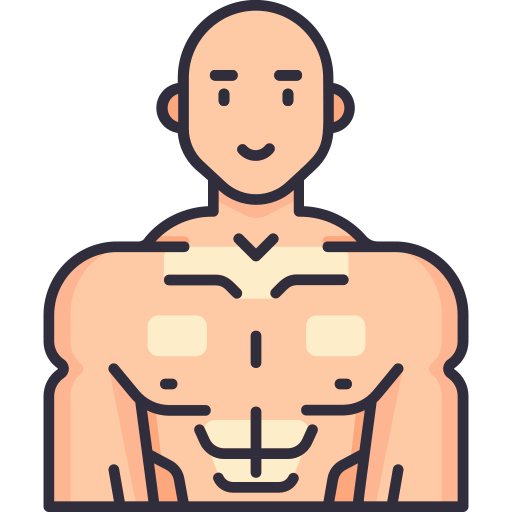Strengthening chest, shoulders, and arms for enhanced performance.
When it comes to building upper-body strength, certain muscle groups play a crucial role in enhancing performance and preventing injuries. Stretching and conditioning these muscles through jump rope exercises can lead to remarkable results. Among the essential areas to focus on are the chest, shoulders, and arms, which collectively contribute to the power and stability of the upper body. One of the key muscle groups to emphasize is the chest, as it plays a vital role in neck stretching and overall upper-body stability. To strengthen the chest effectively, it is essential to work on the muscles in the back as well, as the two areas are interconnected. This balance ensures that the chest is adequately supported and less susceptible to injuries.

By incorporating jump rope exercises into your routine, you engage the chest muscles in a dynamic and efficient manner, leading to increased strength and endurance. Another crucial aspect of upper-body strength lies in the shoulders and trapezius muscles. Contrary to the notion that these muscles are weak, they possess an extra set of muscles compared to the chest, making them powerful contributors to overall strength. While watching athletes like Peyton Manning, you may notice their strong chest and arms, but it's essential to acknowledge the role of their shoulders and trapezius in supporting those movements. In jump rope training, you'll find that the shoulder and trapezius muscles are equally engaged, fostering a balanced and robust upper-body development. A jump rope workout is a highly effective way to target and condition the muscles required for optimal performance in various physical activities. The repetitive motion of jumping rope engages the chest, shoulders, and arms, promoting muscle growth and increased muscular endurance.
🌊
As you progress in your jump rope practice, you'll notice enhanced stability and control over upper-body movements, contributing to improved athletic ability and reduced risk of injuries. The misconception that a weak shoulder and trapezius lead to a weaker chest is debunked through the holistic approach of jump rope training. Instead, these muscle groups work in harmony, supporting each other to create a well-rounded upper-body strength. By incorporating jump rope exercises into your fitness routine, you not only develop chest strength but also elevate the power of your shoulders and trapezius muscles, creating a synergy that propels your performance to new heights.
🧔
In summary, a training jump rope proves to be a dynamic and efficient method to build upper-body strength, with specific emphasis on chest, shoulders and arms. The interconnectedness of these muscle groups allows for a balanced and robust development, contributing to better athletic performance and injury prevention. By integrating jump rope exercises into your fitness regimen, you unleash the true potential of your upper body, powering your way to success in various physical endeavors.
🏊️